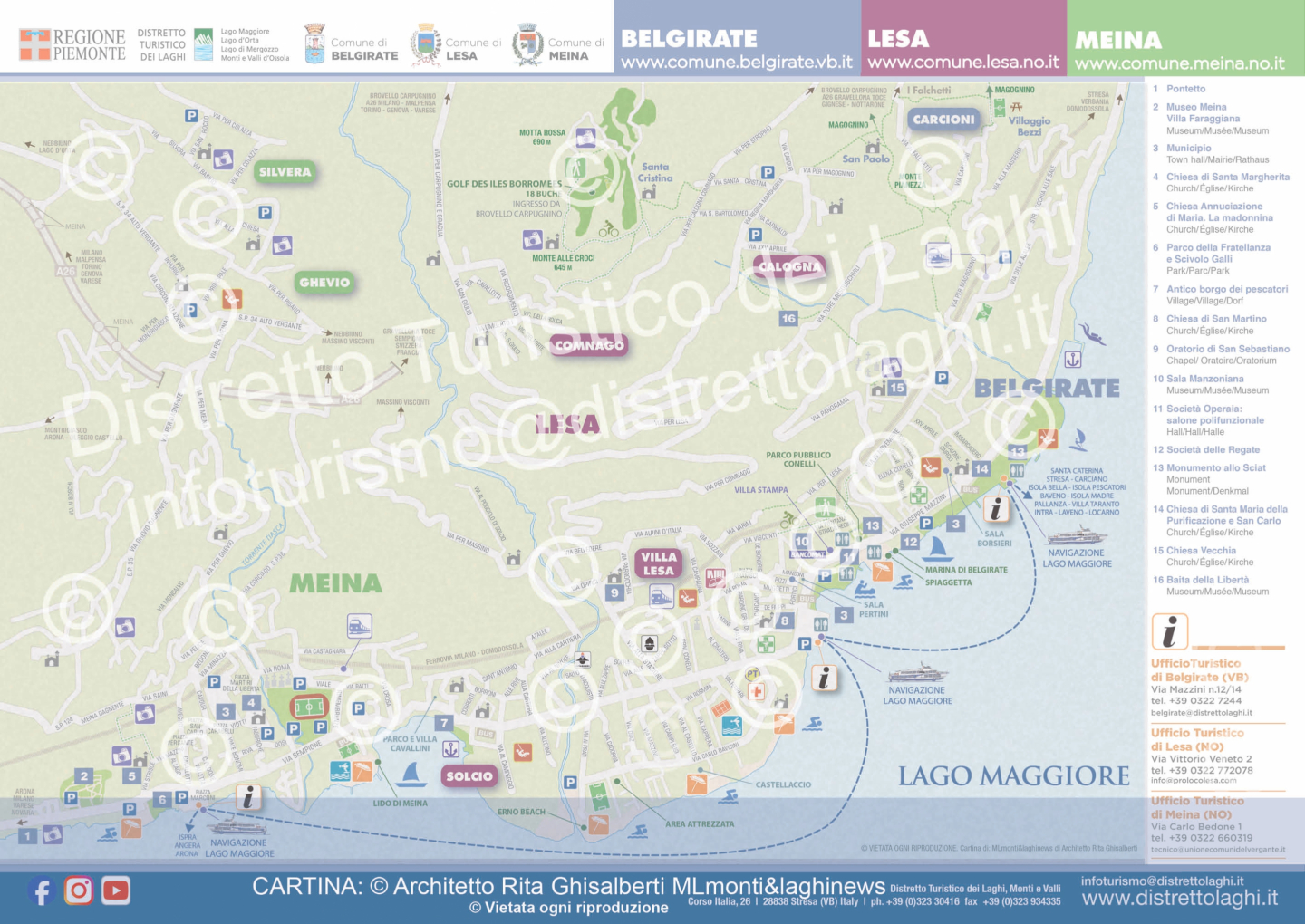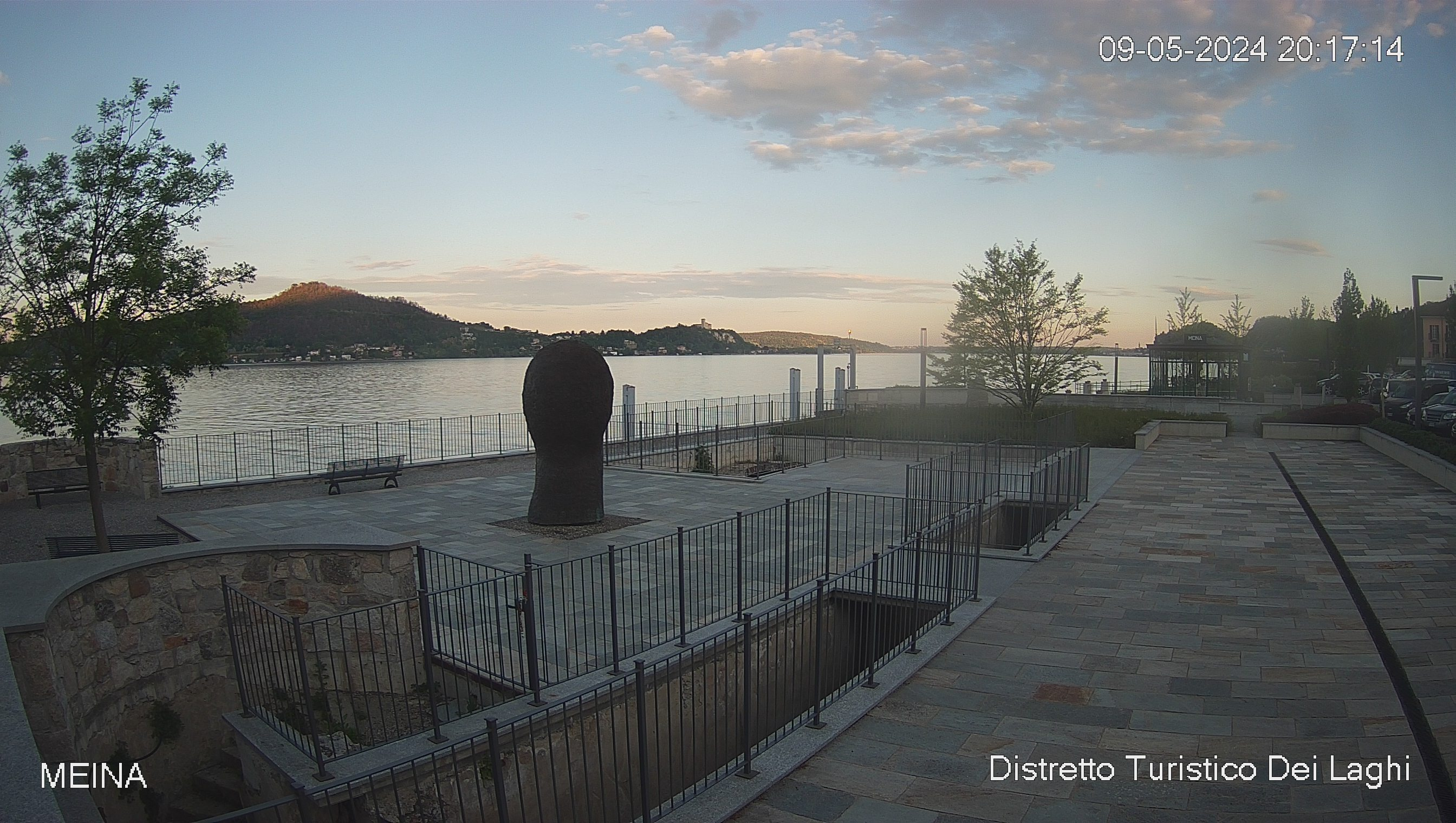Meina
Since the mid-nineteenth century, Meina has been a favourite holiday destination for Piedmontese and Lombard aristocracy due to its mild climate and beautiful landscape. Now, it is enjoyed by tourists from many different places. The first records of this location date back to 951, when “Màdina” was designated “corte regia”, an economically self-sufficient community that was already included in Lombard or Carolingian lands. Over the centuries, it passed to the Benedictine Abbey of SS. Martiri di Arona, then to the Milanese Archbishops and then to the Borromeo family. In the 19th century, several textile factories and factories qualified Meina as the most industrious of the small lake villages, while large villas and lush gardens dotted the coast. The panoramic hamlets of Ghevio and Silvera are located on the hills of Vergante. Villa Faraggiana: in neoclassical style (1855), it was designed by Antonio Busser, a famous engineer from Galliate, for Sen. Alessandro Faraggiana. Chalet Museum: a venue for exhibitions, multimedia displays and outdoor shows. Villa Pasta-La Favorita: in neoclassical style touches of Art Nouveau in the railings and side windows and an English garden. Villa de Savoiroux-La Castagnara: it was redesigned in the second half of the 19th century by the architect Linati on the site of a Jesuit holiday home. Church of Santa Margherita in baroque style (1785). City Hall: A monumental palace dating back to the end of the 19th century, it has a Council Room with a ceiling frescoed by Eleutero Pagliano, a painter from Novara who lived during the time of the Risorgimento. The Church of Santa Maria Assunta in Ghevio: located on a hill called ‘La Fortezza’. it has a Romanesque bell tower. Oratory of San Rocco in Silvera: dated 1684, it has a carved wooden altar and an entrance colonnade with engravings relating to the ‘fillet’, an ancient board game with pawns.




